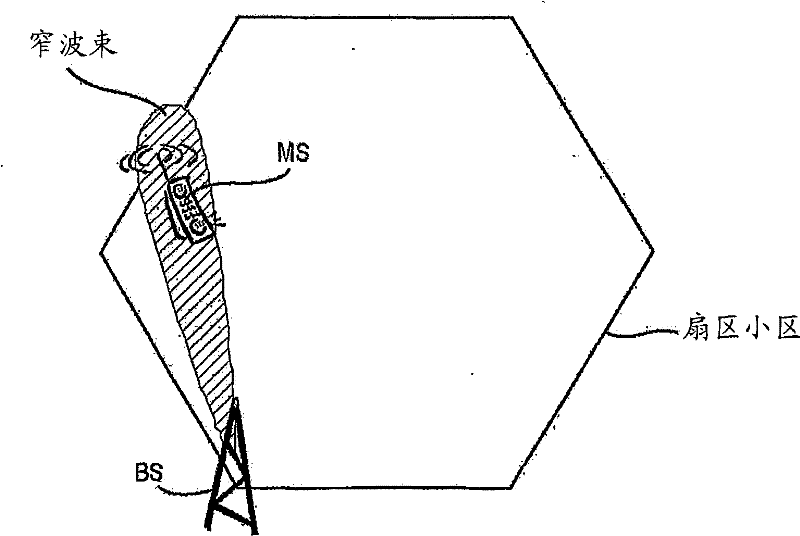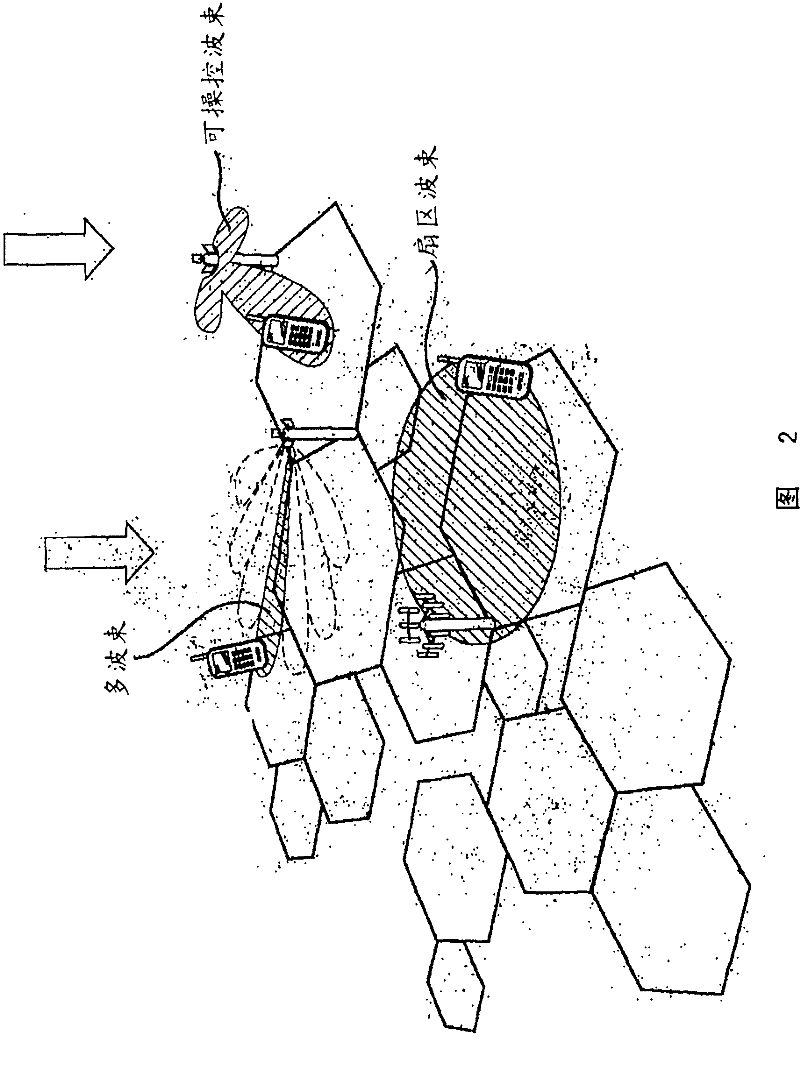Resource scheduling in wireless communication systems using beam forming
A resource scheduling and resource technology, applied in wireless communication, power management, electrical components, etc., can solve the problem of not being able to benefit
- Summary
- Abstract
- Description
- Claims
- Application Information
AI Technical Summary
Problems solved by technology
Method used
Image
Examples
Embodiment Construction
[0029] In order to better understand the present invention, it may be useful to begin with an overview and analysis of the prior art.
[0030] As mentioned, the inventors have realized that a major problem with scheduling algorithms for multi-beam antenna systems is how to manage interference variations. Existing conventional solutions do not allow the system to benefit from the spatial interference filtering provided by the narrow beams and are typically not designed to avoid sudden changes in transmit power due to different narrow beams caused by large disturbance changes. Where it occurs, the CQI used for scheduling and link adaptation decisions may not reflect the actual interference level when the user is actually scheduled, leading to incorrect detection of received data at the user equipment side , many retransmissions, and ultimately, inefficient handling and poor utilization of the available radio resources.
[0031] Unbalanced transmissions in different beams also ...
PUM
 Login to View More
Login to View More Abstract
Description
Claims
Application Information
 Login to View More
Login to View More - R&D
- Intellectual Property
- Life Sciences
- Materials
- Tech Scout
- Unparalleled Data Quality
- Higher Quality Content
- 60% Fewer Hallucinations
Browse by: Latest US Patents, China's latest patents, Technical Efficacy Thesaurus, Application Domain, Technology Topic, Popular Technical Reports.
© 2025 PatSnap. All rights reserved.Legal|Privacy policy|Modern Slavery Act Transparency Statement|Sitemap|About US| Contact US: help@patsnap.com



